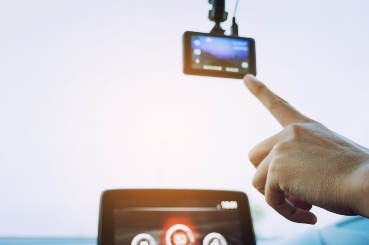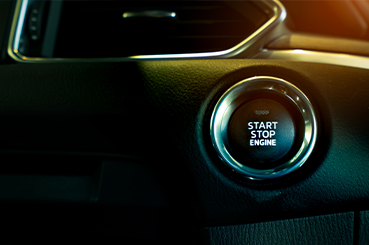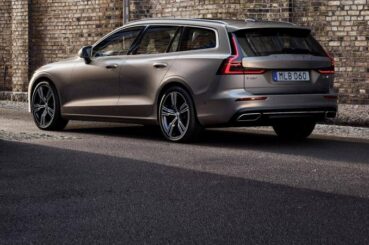There are many reasons why you should use dash cams while driving. Not only can they provide peace of mind, but they can also save you money on your car insurance premiums and protect you in the event of an accident. Anyone who drives a car should strongly consider using a dash cam.
A dash cam is a small camera that attaches to your windscreen and records everything that happens while driving.

In this blog post, we will discuss the many benefits of using a dash cam while driving. We will also provide advice on what to look for when purchasing a dash cam, and break down some of the technical terms that consumers may come across. So, if you’re considering buying a dash cam, read this blog post!
Why buy a Dash Cam?
There are many advantages to having a dash cam in your car. Perhaps the most important benefit is that a dash cam can provide peace of mind. Knowing that you have a recording of everything that happens while you are driving can be very reassuring, especially if you are travelling long distances.
Another important benefit of using a dash cam is that they can save you money on your car insurance premiums. Many insurance companies offer discounts to drivers who have a dash cam installed in their car. This is because having a dash cam can reduce the risk of fraud and false insurance claims.
Finally, another great benefit of using a dash cam is that they can help protect you in the event of an accident. Dash cams can capture footage of accidents and collisions, which can be used as evidence in insurance claims and court proceedings. In the event of an accident, a dash cam can also provide valuable evidence to help with insurance claims and police investigations.
What to look for when purchasing a Dash Cam:
When purchasing a dash cam, there are several things you should keep in mind.

Image Quality
The most important factor is image quality. Make sure to choose a dash cam that has high-resolution video recording capabilities – including a 4K dash cam. This is important so the camera can pick up number plates in case of an incident.
Angle
A dash cam can have different angles, depending on what you are looking for. Some people prefer a dash cam that records from the front of the car, while others prefer a rear dash cam that records from the rear of the car.
Also, there are wide-viewing cameras that provide an extensive view of the road so make sure to choose a dash cam that meets your needs.
Battery Life
An important consideration is battery life. Most dash cams run on batteries, so you’ll want to ensure the one you choose has a long battery life.
There are two main types of batteries used in dash cams: lithium-ion and supercapacitors. Lithium-ion batteries are the most common type of battery and have a long life span.
Supercapacitors are a newer type of battery, which is becoming more popular in dash cams. They have a shorter life span but can withstand extreme temperatures.
Storage and Recording
Another thing to consider is the type of storage media the dash cam uses. A dash cam can save footage in a few different ways. Some dash cams have a built-in hard drive, which stores the footage. Others use removable storage media, like SD cards, which can be easily removed and replaced. Additionally, some dash cams can transmit footage live to a smartphone or computer.
Some dash cams have advanced recording features. For example, some dash cams can record continuously, while others can only record when there is motion or a collision. Additionally, some dash cams allow you to set a specific time or date for the footage to be recorded. This is useful if you want to capture footage of an event that happened on a specific day.

One more feature to look for is the ability to transfer footage wirelessly. This allows you to easily transfer footage from the dash cam to your computer or smartphone. This is useful if you need to review the footage or share it with police or insurance companies.
Most dash cams are small and easily portable, making them easy to take with you wherever you go.
Some dash cams come with wireless connectivity features that allow you to easily transfer footage from the WIFI dash cam to your computer or smartphone. This is useful if you need to review the footage or share it with police or insurance companies.
Additionally, some dash cams come with built-in GPS tracking, which can be useful for tracking your location and speed.
Finally, make sure to choose a dash cam with ample storage space. This is important, as a dash cam can capture a lot of footage. Most dash cams come with either SD cards or internal hard drives that can store a lot of footage.
Installation
You’ll also want to consider the dash cam installation. There are a few different ways of fitting a dash cam into a car.
The most common way is a hardwire dash cam that connects to the car’s battery or is plugged into the USB that then attaches to the windscreen using a suction cup or adhesive mount. Dash cams can also be mounted to the dashboard or the roof of the car.
Additionally, some dash cams come with a built-in battery and can be powered by an AC adapter or USB cable. Make sure to choose a model that is easy to install and doesn’t require a lot of wiring. You’ll also want to choose a model that can be easily mounted to your windscreen.
Additional Features Dash Cams
Additional features that a dash cam can have include: automatic start and stop, motion detection, G-sensor, time stamp, and loop recording.
- Automatic start and stop is a feature that automatically turns the dash cam on and off when you start and stop your car.
- Motion detection is a feature that triggers the dash cam to start recording when it detects movement in front of the car.
- The G-sensor is a sensor that detects sudden impacts or collisions and automatically saves the footage.
- The timestamp is a feature that prints the date and time on each video frame. And finally, loop recording is a feature that records over old footage when the SD card becomes full.

Cost
To help you pick the best dash cam for your driving style, we’ve collated a list to help you on your way.
| Price Range | Brands | Features to Expect | Best For? |
| £40-£65 | Amazon, Nextbase, Navitel, Halfords, Mio | 720p, 1080 resolution 30 FPS, Viewing angle: 30-140 degrees, G-sensor, SD Card | Budget drivers, Non-frequent drivers, Safety Conscious. |
| £100-£200 | Garmin, Nextbase, Mio | Front and Rear Camera, 1080-4k resolution, 30-60FPS, 140-310 degrees Viewing angle, Night Sensor, Voice-control, GPS, SD Card, Parking Mode | Commuters, Frequent drivers, Night Time Drivers, Driving jobs. |
| £200-£300+ | Alpine, Thinkware, Nextbase, BlackVue, Garmin, Mio | Sound recording, Front and Rear Camera, 1080-4k resolution, 30-60FPS, 140-310 degrees Viewing Angle, Night sensor, Voice-control, GPS, SD Card | Adventurer, Daily commuting, Night time and Driving Jobs. |

A dash cam is a great way to capture footage while you’re driving. They are becoming more and more popular, as they offer a number of benefits, including: peace of mind, long battery life, storage capacity, image quality, recording features, and installation options.
Additionally, some dash cams come with wireless connectivity features that allow you to easily transfer footage to your computer or smartphone.
Make sure to choose a model that is easy to install and doesn’t require a lot of wiring. You’ll also want to choose a model that can be easily mounted to your windscreen. Finally, make sure to choose a dash cam with ample storage space.
Remember to drive smart and always be cautious of other drivers.




